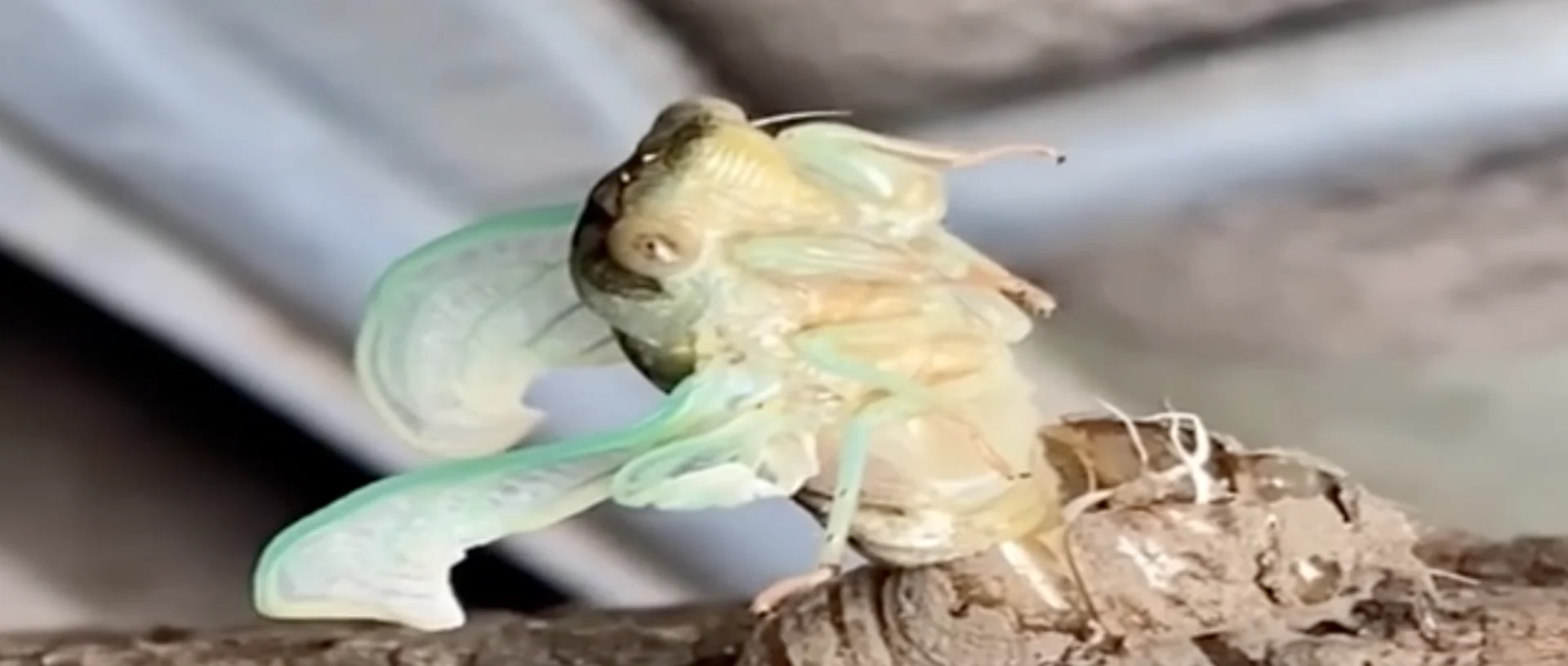
Watch incredible moment as cicada emerges from its exoskeleton
There's a lot to learn about these ancient creatures.
Incredible things happen every day, and nature never ceases to amaze us.
Take the video above, for example. It was sent to The Weather Network by Lauren Linkes from London, Ont.
It's a fascinating clip that features a cicada molting:, a process cicada nymphs go through multiple times as they grow. The final molt reveals the adult cicada with wings.
Cicadas are fascinating creatures. Here are a few more facts about them:
1) Ancient insects
Cicadas are ancient insects with a history dating back to the Cretaceous Period, some 110 million years ago.
2) Lifespan
Cicadas have one of the longest lifespans of any insect, ranging from 2 to 17 years - sometimes longer.
3) Brood formation
Periodical cicadas are known for their synchronized emergence in large numbers, often referred to as "broods." These emergences are typically spaced in prime number intervals, which helps to reduce the chances of predator synchronization. In 2021, an enormous brood emerged between Georgia and New York. With 1.5 million cicadas per acre, they caused a lot of mess - jumping on U.S. President Joe Biden, and even causing a car accident.
4) Sound engineers
Male cicadas have a membrane called "tymbals" in their abdomens that create noise when they are expanded and contracted. The males use the noise to attract females. They make the loudest noises on the hottest days - with sounds reaching up to 90 decibels.
5) Magic ears
Cicadas avoid hearing damage by closing up their ears when singing.
6) Species diversity
There are around 3,200 known species of cicadas worldwide, belonging to the family Cicadidae. They are present on every continent except Antarctica.
7) Different periods
Cicadas are categorized into two main groups: annual cicadas that emerge every year and periodical cicadas that emerge in cycles of 13 or 17 years.
8) Underground life
For most of their life cycle, cicadas live underground as nymphs, feeding on plant roots.
9) Not adults for long
Once reaching the adult phase, cicadas have a relatively short life span, with this stage lasting only a few weeks. As adults, they focus on mating and laying eggs.
10) Predator saturation
The widespread emergence of periodical cicadas can lead to predator saturation, where their sheer numbers overwhelm predators, ensuring that at least some individuals survive to reproduce.
11) But speaking of predators ...
There are many cicada predators, including birds, mammals, and insects like the terrifying cicada killer wasp, which paralyzes cicadas to use as food for their larvae.
12) Cultural significance
Cicadas have held cultural significance in many communities. They are often associated with themes of rebirth, renewal, and transformation in Japanese Buddhist and Chinese cultures.
13) Edible insects
In some cultures, cicadas are considered a delicacy.. They are often prepared by boiling, roasting, or frying. People who are allergic to seafood should refrain from eating them because they share a relation to shrimp and lobsters, earning them the nickname the 'shrimp of the trees':
14) Environmental indicators
Periodical cicadas can serve as an indicator of the health of ecosystems. Their long life cycles make them sensitive to environmental changes, making them potential indicators of habitat stability, climate changes, and soil health.










